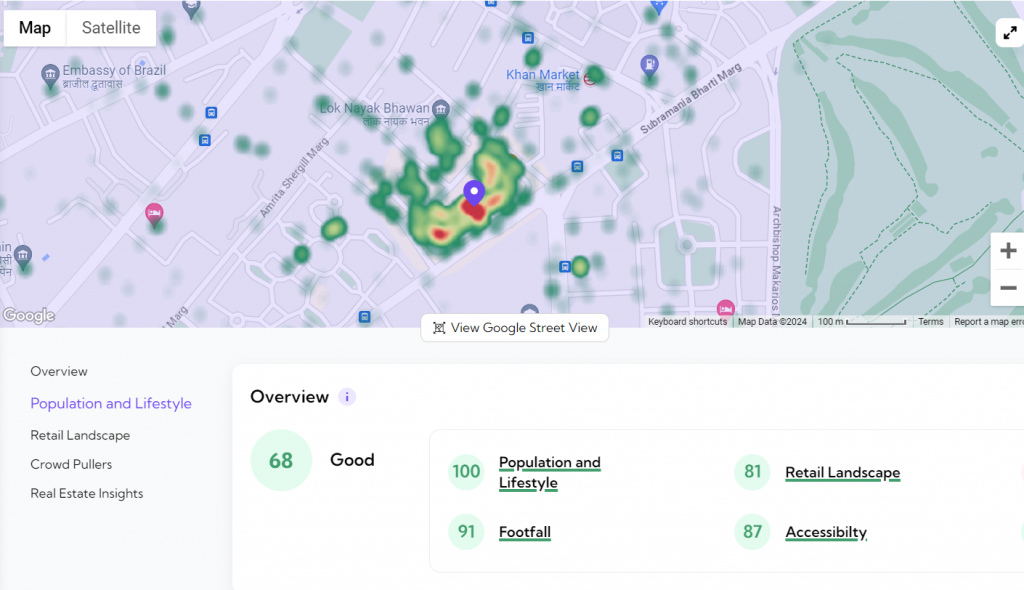After a challenging year in 2023 marked by low consumer confidence and the confluence of lower online or offline sales, store closures, d2c brand shutting down etc. and constrained discretionary income, retailers faced significant obstacles. As per a by Retailers Association of India (RAI) retail sales in January 2024 saw a modest increase of 5% compared to the same period in January 2023.
While e-commerce continues to experience growth, traditional retail maintains a significant role in the lives of consumers. A substantial percentage of individuals still prefer the tangible experience of physical stores over online shopping, even as the function of these stores evolves. Retailers and customers alike are recognizing the potential of stores as showrooms and providers of curated experiences.
The symbiotic relationship between online and offline sales channels is evident in their mutual reinforcement of each other’s growth. Studies indicate that physical store presence can lead to a significant increase in online sales, with a reported uplift of approximately 20%. Conversely, online interactions can drive up to a 15% increase in offline sales, highlighting the interconnected nature of these channels. This synergy not only enhances sales but also allows for a seamless shopping experience for customers, with services like buy online, pick up in-store (BOPIS) bridging the gap between online convenience and in-store tangibility.
What is omnichannel e-commerce?
Omnichannel commerce is a holistic approach that goes beyond mere channel presence. It’s about creating a cohesive, adaptable, and personalized shopping experience that meets the evolving needs of today’s consumers. By leveraging intelligent data and embracing seamless integration across channels, businesses can position themselves at the forefront of the modern retail landscape, delivering enhanced value to their customers.
Importance of Omnichannel Strategy:
In an ideal scenario, an omnichannel strategy proves advantageous for businesses by harmonizing their physical and online channels, leveraging the strengths of both to create a more robust presence than either could achieve independently.
An omnichannel strategy is increasingly becoming a norm in the contemporary business landscape. As per a report from Coresight, 74% of retailers have initiated or fully implemented their omnichannel strategies. For a substantial number of consumers, the adoption of an omnichannel approach is non-negotiable, with 40% stating that they would refrain from engaging with companies that do not support their preferred channels.
Implementing omnichannel retail strategies enables brands to guide customers toward their physical stores, providing an opportunity for firsthand product experiences. Take Mamaearth, for instance, where the sales distribution is 90% online and 10% offline. Transitioning from a multi-channel approach, they embraced the omnichannel trend by establishing retail stores in 100 cities across India. This move aimed to enhance brand visibility and seize additional sales opportunities.

Pepperfry, has witnessed a 45% increase in conversion rate by implementing an omnichannel strategy.
Trends:
- Using AI for predictive analytics: In 2024, artificial intelligence (AI) is the key to predicting customer behavior and optimizing the shopping experience. Retailers are increasingly using AI-driven analytics to forecast trends, personalize recommendations, and enhance inventory management. Businesses can harness AI tools to streamline operations and reduce costs, such as automating the generation of product descriptions. Moreover, platforms like Gmail, Shopify, and Canva are increasingly integrating AI features into their applications. It offers users enhanced assistance and efficiency in their daily tasks. This ensures that businesses not only meet but exceed customer expectations, ultimately driving sales and loyalty.
- Return to brick-and-mortar: Contrary to the belief that e-commerce would overshadow physical stores, 2024 sees a resurgence in the importance of brick-and-mortar locations. Retailers are recognizing the value of an integrated approach, blending online and offline experiences. Pop-up stores, experiential retail, and innovative in-store technologies are redefining the role of physical spaces in the omnichannel landscape.
- An increasing number of retailers are incorporating in-store events to engage with their communities. These events include classes, contests, lessons, meet-ups with brand advocates and influencers, and product demonstrations. The utilization of floor space as a brand showcase provides a sensory shopping experience that the digital realm struggles to replicate. Brick-and-mortar shops remain relevant, serving as a crucial component that needs seamless integration with a business’s other channels.
- Data-driven decision-making: Businesses are relying on comprehensive data analytics to make informed decisions. Location intelligence provides up-to-the-minute data on the buying patterns of consumers, enabling businesses to make informed decisions promptly. This agility is particularly valuable in responding to emerging trends, sudden shifts in demand, or adapting to dynamic market conditions. Incorporating location intelligence into omnichannel strategies enhances the precision and effectiveness of retail operations.

- Social selling through video content: The ultimate goal of leveraging social selling through video content is to drive conversion rates. With the rise of social media platforms, video content has become a powerful tool for engagement. In 2024, retailers are leveraging social selling through video content to connect with consumers. Live streaming has become a key component of social selling strategies. Retailers are utilizing social platforms like Instagram and LinkedIn to conduct live sessions, allowing them to showcase products in real time. This dynamic and interactive format enables customers to engage directly with brands, ask questions, and receive immediate responses.
- Live streaming creates a sense of immediacy and exclusivity, driving a sense of urgency among viewers and potentially leading to increased sales., product demonstrations and interactive content on platforms like Instagram and TikTok are enhancing the shopping experience and driving conversion rates.
- Utilizing online data for offline expansion: One of the key objectives of omnichannel commerce is to facilitate smooth transitions between channels. Employing data-backed solutions like GeoIQ‘s machine learning algorithms empowers leaders in business expansion to identify locations where the average spending quotient is on the rise. This serves as a strategic method for leveraging data to expand into lucrative and profitable sites.
Read: 6 Proven Strategies for Retail Store Expansion
Conclusion:
To recap the various omnichannel retail trends for 2024:
- Using AI for predictive analytics
- Return to brick-and-mortar
- Data-driven decision making
- Social selling through video content
- Centralizing customer data platforms
To effectively expand a retail business in India today, business expansion managers must grasp the diverse array of technologies enhancing workflow efficiency. This encompasses payment methods, inventory management systems, enterprise resource planning solutions, and more. The multifaceted approach not only improves operational efficiency but also fosters a more seamless and tailored shopping experience for consumers. As retailers continue to embrace location intelligence within their omnichannel frameworks, they are poised to stay agile, responsive, and ahead of the curve in meeting evolving consumer demands and market dynamics.
Presenting RetailIQ:
RetailIQ is a cutting-edge AI solution revolutionizing offline expansion for the retail section. It is built on top of extensive location data and brand data to give street-level answers to expansion problems.
RetailIQ is a powerful tool providing site recommendations to maximize success at the store level and minimize the risk of closure. It also helps identify the total addressable market, conduct competition analysis, better understand your target audience traits and their presence, and perform detailed site analysis and reports, all adding up to a successful expansion strategy.


